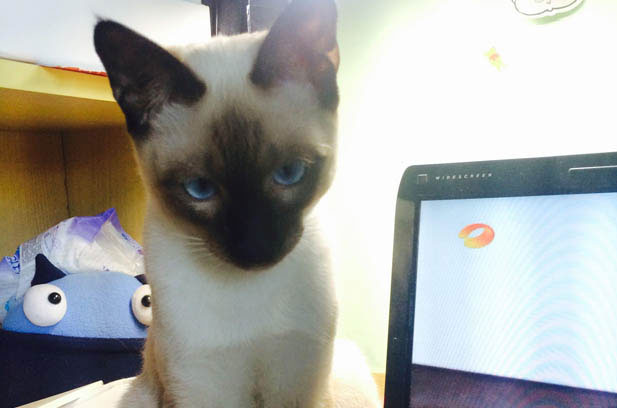The decision to bring a cat into your life is often guided by a mix of logic and emotion. Breed guides and personality descriptions can be helpful, but they rarely capture the magic of meeting a cat who simply “clicks” with you. As someone who’s shared life with cats of all breeds and temperaments, I’ve learned that the most important factor in choosing a feline companion is neither breed nor appearance—it’s the deep, intuitive connection that makes a cat feel like family from the first purr.
Beyond Breed Stereotypes: The Myth of the “Perfect Cat”
Every cat breed comes with a set of expectations. Siamese are labeled “energetic and vocal,” Ragdolls “docile and clingy,” and British Shorthairs “calm and independent.” These generalizations have their uses, but they overlook the most critical truth: every cat is an individual. I once fostered a “timid” Persian who loved climbing curtains, and a “hyper” Siamese who preferred napping in sunbeams. Their personalities defied their breed stereotypes, reminding me that genetics are just the starting point of a cat’s story.

Take my current cat, Mr. Binks, a domestic shorthair with a coat like polished mahogany. According to breed guides, his “mackerel tabby” pattern might suggest a playful nature, but in reality, he’s a couch potato who spends most days snoozing on my desk. His sister, Luna, a “fluffy calico” often associated with sass, is a sweetheart who greets strangers with gentle headbutts. These cats prove that personality is destiny, and no breed label can predict the quirks that make a cat unforgettable.
The First Step: Responsibility Over Romance
Before falling for a cat’s adorable face or striking coat, ask yourself: am I ready for the commitment? Cats live 12–18 years on average, and their care requires time, patience, and financial stability. Here’s what to consider:
Lifespan and Lifestyle: A kitten needs constant supervision, while a senior cat may require medication and quiet routines. Both demand daily feeding, litter cleaning, and affection.
Grooming Realities: Long-haired cats need regular brushing to prevent mats; short-haired cats shed year-round. If “fur on everything” stresses you out, rethink ownership.
Healthcare Costs: Vaccinations, dental care, and unexpected vet visits are inevitable. Budget accordingly.
Emotional Investment: Cats thrive on companionship. Even “independent” breeds need interaction—neglect can lead to anxiety and destructive behaviors.
As a first-time owner, it’s natural to feel overwhelmed, but remember: no one is born a perfect cat parent. Learning happens through trial and error, and every challenge (like a midnight vet visit or a knocked-over plant) is part of the journey.
The Magic of “Cat Chemistry”: When Heart Overrides Head
Despite all the practical considerations, the most unforgettable cat relationships start with a spark—a moment of connection that defies logic. For me, it was when Mr. Binks, a scrawny shelter kitten, climbed into my lap and purred like a motor, ignoring all the “perfect” breeds I’d researched. For others, it might be a Ragdoll’s slow blink or a Siamese’s playful swat that says, “You’re mine.”
This “cat chemistry” is rooted in empathy and timing. A high-energy kitten might be a nightmare for a busy professional but a dream for a stay-at-home artist. A senior cat with arthritis could be a perfect match for a retiree seeking quiet companionship. The key is to observe cats in person—visit shelters, spend time with kittens and adults, and notice how they react to your presence. Do they shy away, or lean into your touch? Do they play gently, or wrestle like tiny lions? These subtle cues matter more than any breed description.
Debunking Myths: Shedding, Temperament, and the “Ideal” Owner
Let’s address common misconceptions that can cloud judgment:
Myth 1: Short-haired cats don’t shed. False. All cats shed, though some breeds (like Sphynxes) shed less. Invest in a good vacuum and embrace the fur—it’s a sign of a healthy cat.
Myth 2: “Hypoallergenic” breeds exist. No cat is truly hypoallergenic, but some produce fewer allergenic proteins (e.g., Balinese, Siberians). Allergy sufferers should spend time with cats before committing.
Myth 3: Only certain people can own certain breeds. Nonsense. A “high-maintenance” Ragdoll can thrive with a first-time owner who’s willing to learn grooming; a “wild” Bengal might calm down with proper stimulation.
Conclusion: The Best Cat is the One Who Chooses You
In the end, the “right” cat isn’t defined by breed, appearance, or even temperament. It’s the cat who makes your heart skip a beat when they curl into your lap, the one whose quirks become your favorite stories, and the companion who turns your house into a home. Whether you choose a pedigreed show cat or a scruffy shelter mix, the bond you build will be uniquely yours—flaws, fur, and all.
So, to anyone debating between breeds: trust your instincts. Visit a shelter, let a cat sniff your hand, and see where fate leads. Remember, the most important question isn’t “Which breed is best?” but “Which cat needs me, and whom do I need?”
As for the fur, the late-night play sessions, and the occasional chaos? They’re all part of the joy. After all, life with a cat isn’t about perfection—it’s about love, laughter, and the magic of sharing your world with a tiny, unpredictable ball of fur who chose you.
Leave a Reply